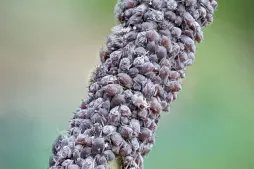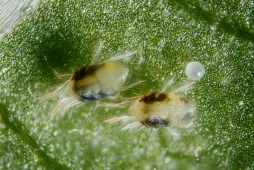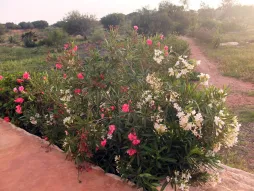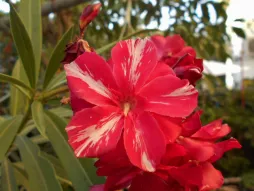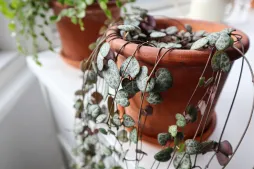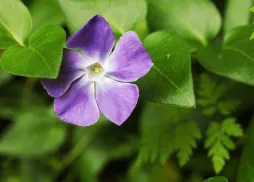Nerium oleander Petite Salmon, the smallest of the oleanders
You don't need a large plot of land or a large terrace to give your outdoors a Provençal feel. The star of Mediterranean gardens, the oleander, comes in a miniature version: Nerium oleander Petite Salmon.
How to recognize Nerium oleander 'Petite Salmon'?
Nerium oleander Petite Salmon is a dwarf oleander. It grows to no more than 60 centimetres in all directions. Its multiple stems at the base give it a bushy, bushy habit, ideal for beds and borders.
Its evergreen foliage resembles that of the botanical Nerium oleander. The tough, lanceolate leaves are arranged in groups of three along a short petiole. The outer surface is glaucous green, the underside pale green.
Nerium oleander 'Petite Salmon' has salmon flowers with yellow centers. They are simple, with just five petals. They bloom between May and October, but have no fragrance. If you want to enjoy a fragrant bloom, it's best to choose a Giant Battle Oleander.
In autumn, the inflorescence fades, giving way to green, bean-like pods. These fruits contain the downy seeds. Carried by the wind, they give rise to new shrubs.
Like other varieties of oleander, Nerium oleander Petite Salmon is dangerous to animals and humans. It contains oleandrin, a substance that causes digestive and cardiac disorders. Ingestion, even in very small doses, can be fatal. The plant is so toxic that it can contaminate the water in which its dead leaves have macerated and the streams in which its roots bathe. You should also refrain from burning its branches: the smoke is also harmful.
Our maintenance tips
Easy to care for and drought-resistant, oleander Petite Salmon have conquered gardens and balconies. To ensure long life and abundant flowering, protect your shrub from cold and frost.
Watering
Allow the substrate to dry for about five centimetres before watering. Use non-calcareous water, such as rainwater. Moisten the soil without soaking it.
Wait for the water to drain through the drainage holes before putting your plant back in its place. Empty any water stagnating in the dish. It may rot the roots.
Spray
Your oleander Petite Salmon hates wet foliage. You must not mist the plant.
Repotting
Choose a larger pierced pot than the previous one. To prevent your shrub from falling over at the first gust of wind, choose a heavy model, in terracotta for example.
Soak the root ball of your Oleander Petite Salmon to rehydrate it.
Line the bottom of the pot with clay balls. You can add drainage felt to retain the soil.
Then pour in a layer of potting soil for flowering shrubs. You can also make your own substrate by mixing :
- one-third garden soil ;
- one-third universal potting soil
- sand ;
- compost.
Remove your plant from the water. Untie the root ball and place it in the center of the container. The root ball should be three centimetres below the edge of the pot. Fill in with substrate and press down.
Water for the first time. If you live in a hot, dry region, mulch the soil to retain moisture and limit evaporation.
Fertilization
You can stimulate the growth of your plant during its growth phase, in spring and summer, with fertilizer.
Apply a liquid fertilizer for flowering plants to promote the appearance of flower buds.
Prune
Remember that oleander Petite Salmon blooms on the previous year's wood. If you prune all the branches at the same time, you won't get any flowers the following year. It's a good idea to shorten a third of the branches each time you prune.
Use a clean, sharp tool, such as disinfected secateurs. The plant is toxic. Wear gloves and wash your hands after pruning. Clean your tools too.
Start by removing the dead wood- it won't grow back. You can cut these branches flush. Then remove any wilted flowers and fruit.
Focus on the longest stems, which are the oldest. Reduce their length by a third to encourage next flowering.
At the end of summer, oleander Petite Salmon produces the buds that will bloom next year. Prune only a third of the branches to ensure flowering the following spring.
Oleander Petite Salmon are toxic. Wear gloves when pruning, and wash your hands and tools after handling them.
Start by removing wilted flowers and fruit. Using clean, sharp pruning shears, cut away dead wood. Finally, locate the largest branches: these are the oldest. Remove a third of their height.
Plantation
Once the last spring frosts have passed, you can plant.
Choose a sunny location sheltered from the wind.
Start by digging a hole two or three times as wide as the root ball. Leave the root ball to soak while you work.
Place some compost at the bottom of the hole. If your soil is heavy, add some pebbles to facilitate drainage. Plant your plant in the middle and fill in with a mixture of soil, potting mix and sand. Take care not to bury the collar.
Dig a trough around the shrub and water. The water will compact the soil and eliminate air pockets.
If you want to limit weed growth and preserve moisture, mulch the base of your plant with organic matter.
Cutting
Wait until the end of flowering to propagate your Oleander Petite Salmon.
To take cuttings from your Oleander Petite Salmon, use a clean, sharp tool such as pruning shears to remove a branch about fifteen centimetres long.
Remove the leaves from the base, leaving only a few at the top. You can dip the other end in cuttings hormone.
Line a pierced pot with a rich, draining potting soil, such as seedling and cutting soil.
Plant your cutting in the center and water. Half the stem should be buried in the substrate. Don' t pack the soil too tightly. The more it is aerated, the easier it will be for the roots to develop.
Set up your seedling in a bright spot where the temperature is between 10 and 15 degrees.
Diseases / Threats
Information
| Family | Apocynaceae - Apocynaceae |
| Type | Nerium - Nerium |
| Species | Oleander - Nerium oleander |
| Lifecycle | Perennial |
| Foliage | Evergreen |
| Exposure | |
| Substrats | |
| Planting methods |
Open ground In pots In tubs |
| Categories | |
| Tags |
Beginner Flowery Toxic |
| Origins |
North Africa Western Asia South Asia Southern Europe |
| Hardiness (USDA) | 8b |
| Leaf color |
|
| Flower colors |
|
| Fruit color |
|
Discover plants from the same family












